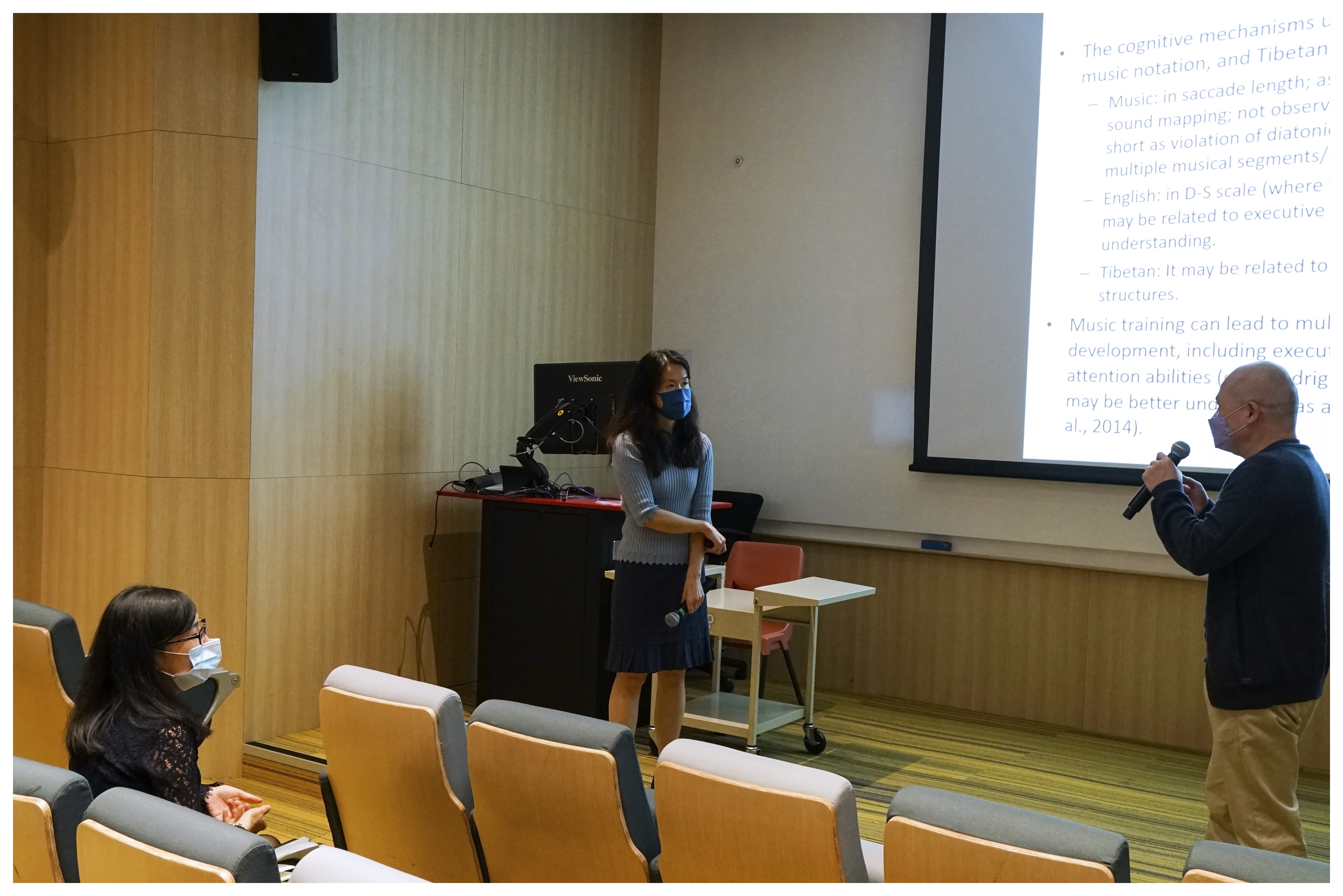Past Events
How does music reading experience modulate eye movement pattern in sentence reading in bilinguals? A correlational study
2021.12.15 Dr. Janet H. HSIAO
Associate Professor
Department of Psychology
The University of Hong Kong
How does music reading experience modulate eye movement pattern in sentence reading in bilinguals? A correlational study
Previous research has suggested that music reading experience modulates visual word processing and visual span in English reading but not in Chinese reading due to higher similarity in the perceptual processes involved between music and English reading than between music and Chinese reading. Accordingly, we hypothesize that in Chinese-English bilinguals, music reading experience may modulate eye movement planning in reading English and Chinese sentences differentially. Chinese-English bilingual musicians and non-musicians read legal, semantically incorrect, and syntactically (and semantically) incorrect sentences in both English and Chinese. In English reading, musicians showed more dispersed eye movement patterns in reading syntactically incorrect sentences than legal sentences, whereas non-musicians did not. In contrast, in Chinese reading, neither musicians nor non-musicians showed significant eye movement pattern difference between legal and syntactically incorrect sentences. Musicians also had shorter saccade lengths when viewing syntactically incorrect than correct musical notations and sentences in an unfamiliar alphabetic language (Tibetan), whereas non-musicians did not. Thus, bilingual musicians’ eye movement planning was disturbed by syntactic violations in both music and English reading but not in Chinese reading, and this effect was generalized to an unfamiliar alphabetic language. This effect may be due to the similarity in perceptual demands on processing sequential symbol strings separated by spaces between music notation and English sentence reading. Thus, music reading experience may modulate perceptual processes in reading differentially in bilinguals’ two languages, depending on their processing similarities to music reading.
> Playback of Dr. Janet H. HSIAO's lecture









